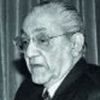The ruling upholding US travel ban is controversial
Initially, Libya, Iran, Syria, Yemen, Venezuela, North Korea, Iraq and Chad were named in the travel ban; Chad and Sudan were later removed.

President Donald Trump has little reason to rejoice over the slim majority (5-4) by which the US Supreme Court upheld his travel ban on several Muslim countries, for all nine judges recalled in detail his hate speeches against Muslims and put them on permanent judicial record for all time to come.
They also recalled the court’s own shameful decision in 1944, to uphold Roosevelt’s order to force Japanese Americans into internment camps during the Second World War, in the infamous Korematsu vs United States. The majority purported formally to overrule it now. But, as Justice Sotomayor said in her strong dissent, “This formal repudiation of a shameful precedent is laudable and long overdue. But it does not make the majority’s decision here acceptable or right. By blindly accepting the government’s misguided invitation to sanction a discriminatory policy motivated by animosity towards a disfavoured group, all in the name of a superficial claim of national security, the court redeploys the same dangerous logic underlying Korematsu and merely replaces one ‘gravely wrong’ decision with another.”
Initially, Libya, Iran, Syria, Yemen, Venezuela, North Korea, Iraq and Chad were named in the travel ban; Chad and Sudan were later removed. The state of Hawaii, three individuals with foreign relatives affected by the ban, and the Muslim Association of Hawaii challenged Trump’s proclamation except with regard to North Korea and Venezuela.
The Immigration and Nationality Act says: “(N)o person shall... be discriminated against in the issuance of an immigrant visa because of the person’s race, sex, nationality, place of birth, or place of residence.” The US Constitution’s first amendment says: “Congress shall make no law respecting an establishment of religion, or prohibiting the free exercise thereof...”
The question before the court was whether the presidential proclamation was significantly affected by “religious animus against Muslims” or based essentially on considerations of national security. Only 258 student visas were issued to applicants from Iran, Libya, Yemen and Somalia in the first quarter of this year. Born with a silver foot in his mouth, President Trump supplied ample evidence to support the plaintiffs’ case.
Justice Sotomayor said at the very outset: “(The US) is a nation built upon the promise of religious liberty… The court’s decision today fails to safeguard that fundamental principle. It leaves undisturbed a policy first advertised openly and unequivocally as a ‘total and complete shutdown of Muslims entering the United States’ because the policy now masquerades behind a facade of national security concerns. But this repackaging does little to cleanse Presidential Proclamation No. 9645 of the appearance of discrimination that the President’s words have created.”
She proceeded to recite some of his diatribes against Muslims including his belief that the Muslim faith, “...‘hates us… (W)e can’t allow people coming into this country who have this hatred of the United States… (a)nd of people that are not Muslim’. That same month, Trump asserted that ‘(w)e’re having problems with the Muslims coming into the country.’ He therefore called for surveillance of mosques in the United States, blaming terrorist attacks on Muslims’ lack of ‘assimilation’ and their commitment to ‘Sharia law’. A day later, he opined that Muslims ‘do not respect us at all’ and ‘don’t respect a lot of the things that are happening throughout not only our country, but they don’t respect other things’.”
His plea to one of his key advisers on the “Muslim ban”, on January 28, 2017, gave him away: “Show me the right way to do it legally.” On September 24, 2017, Trump issued his proclamation restricting entry into the US of certain nationals from Muslim-majority countries.
This case provides a useful precedent for judicial note of ministers’ pronouncements, which lay bare the real intention behind the laws they make, but which the texts of the laws try to hide. Justice Sotomayor concluded: “Ultimately, what began as a policy explicitly ‘calling for a total and complete shutdown of Muslims entering the United States’ has since morphed into a ‘proclamation’ putatively based on national security concerns. But this new window dressing cannot conceal an unassailable fact: the words of the President and his advisers create the strong perception that the proclamation is contaminated by impermissible discriminatory animus against Islam and its followers.”
Yet, faced with these very explicit words by Trump, the majority took a different view. Chief Justice Roberts said that the proclamation “is facially neutral towards religion” — regardless of the fact that it was demonstrably inspired by presidential bigotry. The courts can and must look beyond the letter of the law to ascertain its real purpose and purport.
By arrangement with Dawn
